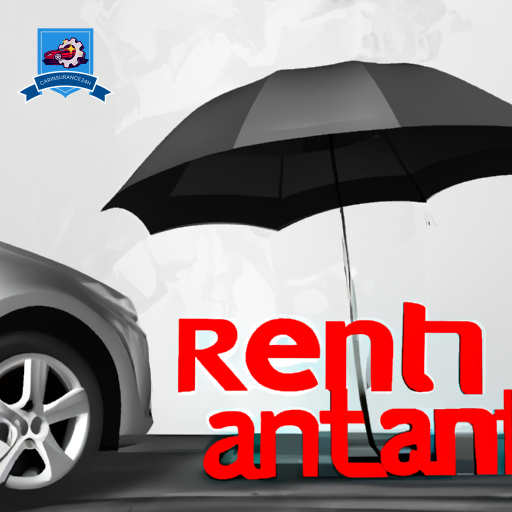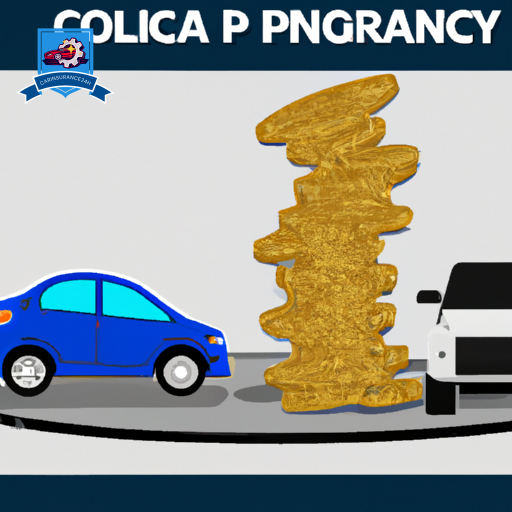In the domain of auto insurance, rental reimbursement coverage emerges as a nuanced but critical aspect, designed to alleviate the inconvenience encountered during vehicle repairs after an accident. This coverage, often overlooked in policy discussions, warrants a closer examination for its potential to provide financial relief by covering the cost of a rental car.
However, the intricacies of eligibility criteria, coverage limits, and the claims process present a complex landscape for policyholders. A deeper exploration into the comparative benefits, alongside the exclusions and limitations inherent to this coverage, reveals its indispensable value and underscores the importance of informed decision-making in policy customization.
What Is Rental Reimbursement Coverage?

Rental reimbursement coverage, an optional addition to auto insurance policies, provides financial assistance for the cost of renting a vehicle while your car is being repaired due to a covered insurance claim. This type of coverage is pivotal for individuals who rely heavily on their vehicles for daily activities such as commuting to work, running errands, or transporting family members. It guarantees that the inconvenience of car repairs does not disrupt your daily life more than necessary.
The coverage cost of rental reimbursement is influenced by several factors including the limits chosen by the policyholder. These limits typically determine the maximum amount the insurance company will pay per day for a rental car and the total maximum amount payable during the repair period. It’s important to select limits that align with the rental costs in your area and the type of vehicle you would need. Generally, the addition of rental reimbursement coverage to an auto insurance policy results in a modest increase in the premium, offering peace of mind for a relatively low cost.
Policyholders can also take advantage of policy discounts that may be available to them, potentially offsetting the cost of adding rental reimbursement coverage. Insurance companies often offer discounts for bundling multiple policies, maintaining a clean driving record, or installing safety devices in your vehicle. By exploring these discounts, policyholders can make rental reimbursement coverage even more affordable and guarantee they are fully protected without a significant impact on their budget.
Eligibility and Requirements

Understanding the benefits and cost implications of rental reimbursement coverage naturally leads to questions about who is eligible for this insurance and what specific requirements must be met to secure it. Eligibility and the requisite criteria for obtaining rental reimbursement car insurance hinge on several key factors, which insurers evaluate to manage risk and determine policy premiums.
Below are the primary eligibility criteria and requirements:
-
Important Driver’s License: Applicants must hold a valid driver’s license. This fundamental requirement ensures that the policyholder is legally permitted to operate a vehicle, which is a basic prerequisite for any car insurance policy.
-
Credit Check: Many insurance companies conduct a credit check as part of the application process. The applicant’s credit score can have a big influence on the insurance premium rate. A higher credit score may lead to more favorable terms, as it suggests financial reliability.
-
Existing Auto Insurance Policy: Rental reimbursement coverage is typically an add-on or endorsement to an existing full or collision insurance policy. It is not sold as a standalone policy. As a result, applicants must already have or be willing to purchase a qualifying base policy.
-
Policy Duration: The duration of the existing auto insurance policy may influence eligibility for rental reimbursement coverage. Some insurers may require the base policy to be in effect for a minimum period before allowing the addition of rental reimbursement coverage.
Meeting these requirements is vital for securing rental reimbursement coverage. It’s important for potential policyholders to review these criteria closely and make sure they meet the eligibility standards set forth by their chosen insurance provider.
Coverage Limits Explained

When considering rental reimbursement car insurance, it is important to understand the coverage limits that dictate the extent of compensation available in the event of a claim. These limits are essential in determining how much the insurance company will pay towards a rental car when your vehicle is out of service due to a covered loss. Coverage limits typically are outlined in your policy declaration and can greatly vary from one insurer to another, impacting the overall effectiveness and utility of the coverage.
Coverage limits are often expressed in two numbers: the maximum daily amount payable and the maximum total amount payable per claim. For example, a common coverage limit might be $30/$900, indicating the insurer will pay up to $30 per day for a rental car, with a maximum of $900 per claim. It is important to select limits that align with the rental costs in your area to avoid out-of-pocket expenses.
Policy discounts may be available that can influence the cost-effectiveness of adding rental reimbursement coverage to your policy. Some insurers offer discounted rates for combining this coverage with other types of insurance or for maintaining a claim-free record. Additionally, geographic restrictions may apply, limiting where you can rent a vehicle or from which rental agencies, impacting the convenience and utility of the coverage.
Understanding these coverage limits and the potential for policy discounts and geographic restrictions is important in making an informed decision about rental reimbursement car insurance. It enables policyholders to balance the cost against the benefits, ensuring they select coverage that best meets their needs without unnecessary expense.
The Claims Process

Initiating a claim for rental reimbursement coverage, policyholders must manage a series of steps designed to guarantee a smooth and efficient processing experience. Understanding the intricacies of this process is vital for making sure that coverage benefits are maximized and that reimbursement is received in a timely manner. The procedure typically involves detailed claim documentation and ongoing communication with an insurance adjuster, both of which are pivotal in the claims adjudication process.
The claims process can be distilled into the following key steps:
-
Notification and Claim Filing: Immediately following an incident that disables your vehicle, contact your insurance provider to notify them of the event and initiate the claim process. This step often requires submitting preliminary claim documentation, such as the accident report and evidence of the damage to your vehicle.
-
Adjuster Assignment: Your claim will be assigned to an adjuster who will be your main point of contact throughout the claims process. Adjuster communication is essential at this stage, as they will evaluate the claim, determine coverage eligibility, and guide you through the necessary steps.
-
Documentation Submission: Submit all required documentation as specified by your adjuster. This may include repair estimates, police reports, and receipts for any immediate expenses related to the incident.
-
Claim Review and Approval: The adjuster will review the submitted documentation to confirm the extent of coverage and calculate the reimbursement amount. Upon approval, arrangements for rental car services can be made, adhering to the policy’s coverage limits.
Managing the claims process with thoroughness and diligence ensures that policyholders receive the support they need during vehicle repairs, minimizing disruptions to their daily routines.
Comparing Costs and Benefits

Evaluating the costs and benefits of rental reimbursement car insurance is essential for policyholders to guarantee they are making a financially sound decision. This type of insurance coverage, while optional, offers considerable advantages under circumstances where your vehicle is unavailable due to repairs following a covered accident. However, the decision to add this coverage to your policy should be based on a careful consideration of its cost relative to the benefits it provides.
To begin with, the cost of adding rental reimbursement coverage to an existing car insurance policy is generally low, often amounting to a small fraction of the overall policy cost. This affordability makes it an attractive option for many drivers who seek peace of mind. Nevertheless, it’s important to compare this cost against the potential out-of-pocket expenses for alternative transportation should your vehicle be out of commission. Depending on the duration of repairs, costs for rental cars, or other forms of transportation like ridesharing services, can quickly accumulate, far surpassing the annual premium for rental reimbursement coverage.
Additionally, some insurance providers offer policy discounts or special rates for customers who bundle rental reimbursement with other types of coverage, further enhancing the financial benefits. By taking advantage of such discounts, policyholders can mitigate the additional cost of this coverage, making it an even more cost-effective solution for managing transportation needs during vehicle repairs.
Exclusions and Limitations

As we explore the intricacies of rental reimbursement car insurance, it is important to understand the policy’s exclusions and limitations, which affect coverage. Key among these are coverage time limits and restrictions on non-covered vehicles that dictate the span and scope of the rental car benefit.
Acknowledging these parameters is essential for policyholders to accurately assess the utility and limitations of their coverage.
Coverage Time Limits
Understanding the coverage time limits, including exclusions and limitations, is important for policyholders to make sure they fully benefit from rental reimbursement car insurance. This guarantees clarity on when the coverage is applicable and under what circumstances it might not be. Key aspects include:
-
Travel Delays: Coverage might not extend to rental costs incurred due to travel delays unless specifically stated in the policy.
-
Geographic Restrictions: Some policies limit coverage to rentals within certain geographic areas, excluding international rentals or those outside predefined zones.
-
Maximum Duration: Policies typically cap the rental period, often ranging from 30 to 60 days.
-
Daily Limit: There’s often a daily reimbursement limit, which may not cover the full cost of the rental.
Understanding these facets guarantees policyholders can navigate their coverage effectively.
Non-Covered Vehicles
When considering rental reimbursement car insurance, it is important to be aware of specific vehicle exclusions and limitations that may affect coverage eligibility.
Not all personal vehicles qualify for this type of insurance. For instance, vehicles used for commercial purposes, or those that are not registered under the policyholder’s name, might be excluded from coverage.
Additionally, rental reimbursement policies typically do not cover maintenance costs for personal vehicles. This means that if a rental is needed due to routine service or mechanical failures unrelated to a covered accident, the policyholder would likely bear the full cost of the rental.
Understanding these exclusions and limitations is essential for policyholders to manage their expectations and make sure they have the appropriate coverage for their needs.
How to Add to Your Policy

Adding rental reimbursement coverage to your existing car insurance policy can be accomplished through a simple process, typically initiated by contacting your insurance provider. This addition is particularly beneficial for individuals who rely heavily on their vehicles for daily activities and cannot afford downtime due to repairs. Here is a step-by-step guide to enhance your policy with rental reimbursement coverage, leveraging opportunities for policy discounts and utilizing online application options for convenience.
-
Contact Your Insurance Provider: Reach out to your current car insurance company to inquire about adding rental reimbursement coverage. This can usually be done via phone, email, or through an online customer service portal. Mention any policy discounts you might be eligible for to reduce your premium.
-
Review Coverage Options: Your insurance provider will present various coverage options, detailing the rental car class and daily/monthly limits. Evaluate these options carefully to choose the one that best suits your needs and budget.
-
Complete an Online Application (if available): Many insurers offer the convenience of online applications for adding coverage. This streamlined process can save time and allow you to review the terms and conditions at your own pace before committing.
-
Confirm and Pay for the Added Coverage: Once you have selected the desired rental reimbursement option, confirm the addition with your insurer and arrange for payment. This might involve adjusting your monthly premium or making a separate payment for the added coverage.
Real-World Scenarios

Understanding the practical applications of rental reimbursement car insurance can greatly enhance policyholders’ preparedness in case of vehicular mishaps.
This section will elucidate the specifics of accident coverage, provide clarity on the implications of daily limits, and detail the criteria for eligibility.
These insights aim to arm readers with the necessary knowledge to navigate real-world scenarios efficiently.
Accident Coverage Explained
Accident coverage, an essential aspect of rental reimbursement car insurance, provides financial protection in various real-world scenarios where a rental vehicle is damaged or involved in a collision. This coverage is designed to mitigate financial strain and guarantee mobility, even when your personal vehicle is unavailable due to repairs following an accident. Understanding its mechanics is important for leveraging its benefits effectively.
Key considerations include:
-
Collision Responsibility: Determines liability and coverage applicability in the event of a collision involving the rental car.
-
Premium Impact: Assesses how claims may influence future insurance costs.
-
Coverage Limits: Defines the extent of financial protection provided.
-
Claim Process: Outlines steps to file a claim, ensuring timely reimbursement and repair authorization.
Daily Limit Insights
How do daily limits on rental reimbursement coverage affect policyholders in various scenarios? Understanding these limits is important for efficient expense management, especially following an accident necessitating a rental car.
For instance, a policy with a low daily limit may suffice for short-term, economical car rentals. However, in situations requiring longer rental periods or more expensive vehicles, these limits can lead to significant out-of-pocket expenses.
This difference highlights the importance of evaluating one’s needs against policy offerings. Policyholders facing recurrent or specific rental needs might find value in exploring policy upgrades. An upgrade can adjust daily limits to better align with individual circumstances, ensuring coverage adequacy without compromising on expense management strategies.
Eligibility Requirements Overview
Eligibility for rental reimbursement car insurance varies drastically across different insurers, necessitating a thorough review of policy requirements to guarantee coverage in real-world scenarios. Understanding these prerequisites is essential for policyholders to make sure they are adequately covered.
Here are key eligibility factors:
-
Driver History: Some insurers may assess a driver’s history, potentially offering policy discounts for those with clean records.
-
Policy Discounts: Eligibility may be influenced by applicable discounts, such as multi-policy discounts or safe driver rewards.
-
Covered Events: Not all incidents may qualify for rental reimbursement; typically, only those covered under your policy’s full or collision coverage.
-
Policy Type: The specifics of your existing insurance policy can affect eligibility, with some policies inherently including rental reimbursement while others require it as an add-on.
Frequently Asked Questions
Can I Choose Any Rental Car Company, or Am I Limited to Specific Partners of the Insurance Company?
Roving through the aftermath of an automotive mishap, one often wonders whether the choice of a rental car company is at their discretion or if they are confined to the insurer’s partner preferences. Typically, insurance policies may limit selections to specific partners, offering negotiated rental deals that benefit both parties.
However, policyholders are encouraged to review their agreements meticulously, as some insurers provide the flexibility to choose any rental company, albeit potentially affecting the reimbursement amount.
How Does Rental Reimbursement Coverage Interact With Ride-Sharing Services or Public Transportation Options if I Prefer Those Over a Rental Car?
Ride-sharing benefits and public transportation integration within rental reimbursement coverage vary by insurer. Typically, policyholders opting for alternatives to rental cars, such as ride-sharing services or public transportation, may receive compensation equivalent to the cost of a rental vehicle.
However, it is essential to review the policy details or consult with the insurance provider to understand the specific terms and eligibility criteria for these options, ensuring seamless coverage alignment with personal transportation preferences.
If My Vehicle Is Involved in an Accident While Abroad, Does My Rental Reimbursement Coverage Still Apply, or Is It Geographically Limited?
Venturing beyond one’s homeland mirrors the journey of rental reimbursement coverage in the domain of international accidents. Much like a traveler facing unknown territories, this coverage may encounter limitations.
International coverage and policy exclusions become pivotal in determining whether assistance extends across borders. It is imperative to scrutinize the policy details, as geographical restrictions often apply, leaving policyholders to navigate the complexities of foreign incident support with precision and foresight.
Are There Any Specific Documentation or Proof Requirements When Claiming Rental Reimbursement That Differ From the Usual Claims Process?
When initiating a claim process for reimbursement, it is essential to understand that specific documentation requirements may vary slightly from standard procedures. Typically, claimants must provide thorough proof of the incurred expenses, which could include rental agreements, receipts, and potentially a police report if the situation warrants.
These documents serve as verification of the claim and are critical for the processing and approval of the reimbursement request by the insurance provider.
Can Rental Reimbursement Coverage Be Applied Retroactively if I Wasn’t Aware I Had the Option at the Time of the Rental?
Coverage eligibility for retroactive claims varies among insurance providers. Generally, applying coverage retroactively is not standard practice. Policyholders are advised to review their policy terms or consult with their insurance agent to understand the specific conditions under which retroactive claims might be considered.
It is important to be aware of the coverage options at the time of the rental to guarantee eligibility for reimbursement under such circumstances.
